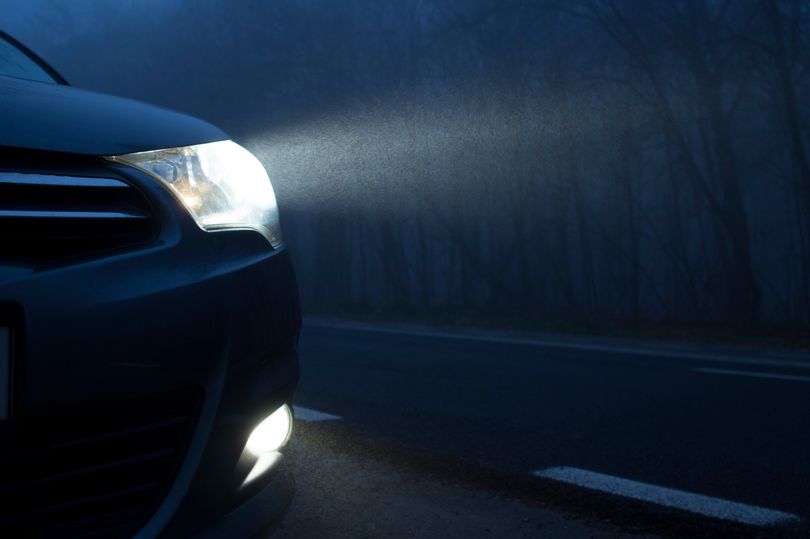
A significant 57 percent of drivers are raising concerns about LED headlights, complaining that they are overly bright and disruptive on the roads, according to a survey conducted by LKQ Euro Car Parts. These lights not only cause inconvenience but also contribute to discomfort. However, an equal amount consider them hazardous to travelers on the roads.
A significant portion of the survey—25 percent—is are irritated by the overly intense light from LEDs , admitting it affects their ability to see properly when driving.
Even though they offer impressive fuel efficiency and excellent nighttime visibility, the highly luminous headlights in modern vehicles are raising worries about their impact on arriving aircraft.
READ MORE: Elon Musk appears shaken as he faces harsh trolling during a gaming livestream conducted from his personal airplane.
READ MORE: Wells Fargo is offering $5,000 to customers with just the requirement of completing a form to receive it.
Here are the statistics from LKQ Euro Car Parts: About 28 percent of car enthusiasts support regulations to control the party-like LED lighting trends, while a smaller group advocates for completely banning them.

For those bothered by the bright lights, the Daily Record offers a low-profile tip directly from the pros: reduce your dashboard brightness when driving at night.
As the saying goes: "A glaring dashboard can hinder your vision when adapting to dark conditions, intensifying the dazzle from opposing headlamps."
They add this savvy slice of guidance: "If possible, lower the brightness of your dashboard at night to improve contrast and help your eyes adapt more easily."
Specialists from LKQ Euro Car Parts have offered valuable tips for managing the intense glare from opposing vehicle lights during nighttime drives. They emphasize that maintaining spotlessly clean windows and mirrors is essential because "Grime on windows and mirrors amplifies the glare from approaching headlamps by dispersing the light upon contact with their surfaces, hence regular cleaning is vital."
To guarantee an unobstructed view, it’s advised to use a microfiber cloth along with a specialized glass cleaner to eliminate all fingerprints and grime, leaving your glass surfaces shining brightly.
Beyond maintaining cleanliness, specialists highlight the significance of correctly adjusting your mirrors to avoid being blinded by intense light. Their guidance includes: "Mirrors not properly aligned might bounce high-beam headlights coming up behind you right into your vision, intensifying the brightness from LEDs. If possible, set your rearview mirror to ‘night’ or ‘auto-dimming’ function."
They also recommend adjusting your side mirrors so they point away from the strong lights of other vehicles and instead focus more on the roadway.
The experts go further by highlighting the importance of routine eye examinations, particularly as we get older, because our eyes may become increasingly vulnerable to glare with time. As they emphasize: "Vision changes, especially as we advance in years, can lead to greater sensitivity to glare."
Conducting routine vision exams to make sure your prescription remains current is a crucial safety measure for driving. This practice can also aid in identifying issues such as cataracts, which may heighten sensitivity to glare.
Dr. Deborah Lee from Dr Fox online pharmacy adds that strong lighting can set off various physical reactions, which tend to be more severe in elderly motorists.
She explained the problem as follows: "Being suddenly exposed to intense headlights may result in transient visual loss, eyestrain, migraines, and reduced reflexes. The impact could be more severe for elderly motorists or individuals who have pre-existing ocular issues."
To put it briefly, the brightness of LED headlights can lead to something known as intraocular straylight, causing blurred vision and making it difficult for the eyes to focus.
This becomes particularly risky when driving after dark since it can make it more difficult to spot dangers on the roadway.
It’s not surprising that people whose vehicles lack LED headlights are more upset about this issue, as an overwhelming 78 percent find these lights excessively bright, whereas only 47 percent of those who have LED headlights feel the same way.
However, even some drivers who use LED lights find them so intense that they opt out of using the bulbs altogether, with 7 percent choosing to remove them entirely.
This significant problem affects people of all age groups, but older individuals bear the brunt of it, as over one-third (36 percent) of those above 65 confess that LED glare hampers their vision when driving. This figure sharply contrasts with only 15 percent of young drivers aged 18-24 being impacted.
When it comes to losing one's temper, younger people are more likely to feel agitated; 33 percent of drivers between the ages of 18 and 24 admit to getting frustrated due to glaring headlights, which can result in road rage. This contrasts sharply with only 2 percent of older individuals who say they experience comparable anger.
The British government is currently investigating the brightness of LED headlamps, following pressure from organizations such as the RAC and the Royal College of Optometrists. This study’s outcomes are expected to be released this coming summer.
